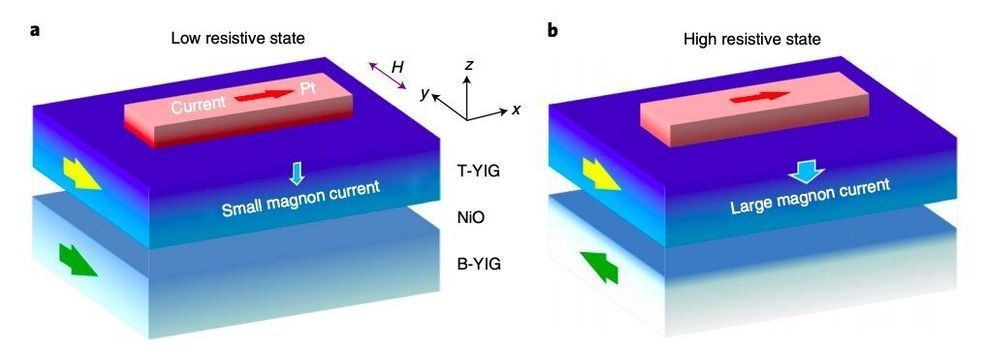In recent years, several research teams worldwide have been trying to develop a new class of devices known as spintronics or spin transport electronics. These devices can encode, store, process and transmit data using the spin of electrons in certain materials.
The operation of spintronics relies on magneto-transport effects, such as giant magnetoresistance (GMR) and tunneling magnetoresistance (TMR), which enable the transport of electrons through a given material in the form of a magnetic field. A spintronic device is generally made of two conductive ferromagnetic layers separated by a non-magnetic metal layer (i.e., a spin valve) or an insulator layer (i.e., a magnetic tunnel junction).
Magneto-transport effects, which occur in a device’s spin valves and magnetic tunnel junctions, result in a relatively low resistance when the two magnetic layers are parallel and a relatively high resistance state when they are not. These effects are crucial to the functioning of many contemporary storage devices, including hard disk drives and magnetic random access memories (MRAMs).
